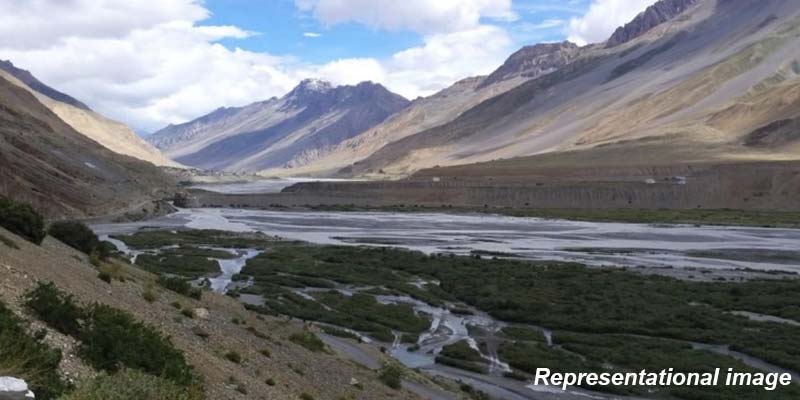- India
- Aug 12
- Kevin Savio Antony
Glacial lakes multiply in Himachal Pradesh and Tibet, says study
The rapid retreat of glaciers due to climate change has led to a significant rise in moraine-dammed lakes in Himachal Pradesh and Tibet's Trans Himalayan Region.
These glacial lakes, particularly in the Satluj river catchment area, have almost doubled in number from 562 in 2019 to 1,048 in 2023, as revealed by a study from the Centre on Climate Change of Himachal Pradesh Council for Science Technology-Environment (HIMCOSTE).
Key findings of the study:
• Glacier Retreat: The retreat of glaciers in the Himalayas has led to the formation of new glacial lakes and the expansion of existing ones. The study indicates a significant rise in the number of small glacial lakes, particularly in the Upper Satluj basin, which is more susceptible to glacial lake formation due to climate change.
• Rise in Glacial Lakes: The study mapped 1,048 glacial lakes in 2023, with 900 of them being small lakes spanning less than five hectares. The increase in these small lakes suggests that the effects of climate warming are more pronounced in the higher Himalayan regions.
• Downstream Risks: The rise in glacial lakes poses potential threats to downstream areas if any of these lakes burst their bounds. The study emphasizes the risk of glacial lake outburst floods (GLOFs), which could have catastrophic consequences for human life and infrastructure downstream.
• Climate Change Impact: The findings underscore the severe impact of climate change on the Himalayan region, particularly in terms of glacier melting, reduced snowfall, and the formation of unstable glacial lakes.
What are glacial lakes?
• The Himalayan arc is young and tectonically active, formed as a result of massive collision between Eurasia and the northward drifting Indian plate about 50 million years ago. It forms the northern limit of India.
• The Hindu Kush–Karakoram–Himalayan region hosts the largest and most important glacier systems outside the poles and is commonly referred to as the “Third Pole” on the Earth.
• A glacial lake is formed when a glacier erodes the land, and then melts, filling the depression created by the glacier.
• These bodies of water play a crucial role as freshwater sources for rivers in the Himalayan region.
• Glaciers across the globe have been experiencing unprecedented rates of retreat and thinning due to human-caused climate change.
• This retreat leads to the formation of new lakes and the enlargement of existing ones in the Himalayan region.
Types and number of glacial lakes in Himalayas:
i) Moraine-dammed (307) (water dammed by moraine)
ii) Ice-dammed (8) (water dammed by ice)
iii) Erosion (265) (water dammed in depressions formed by erosion)
iv) Other Glacial lakes (96)
• Glacial lakes also pose significant risks such as Glacial Lake Outburst Floods (GLOFs), which can have devastating consequences for communities downstream.
(The author is a trainer for Civil Services aspirants.)

